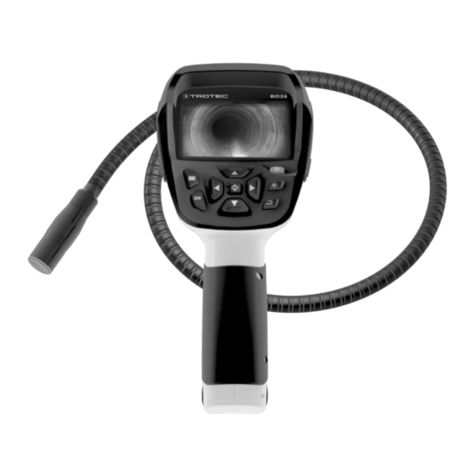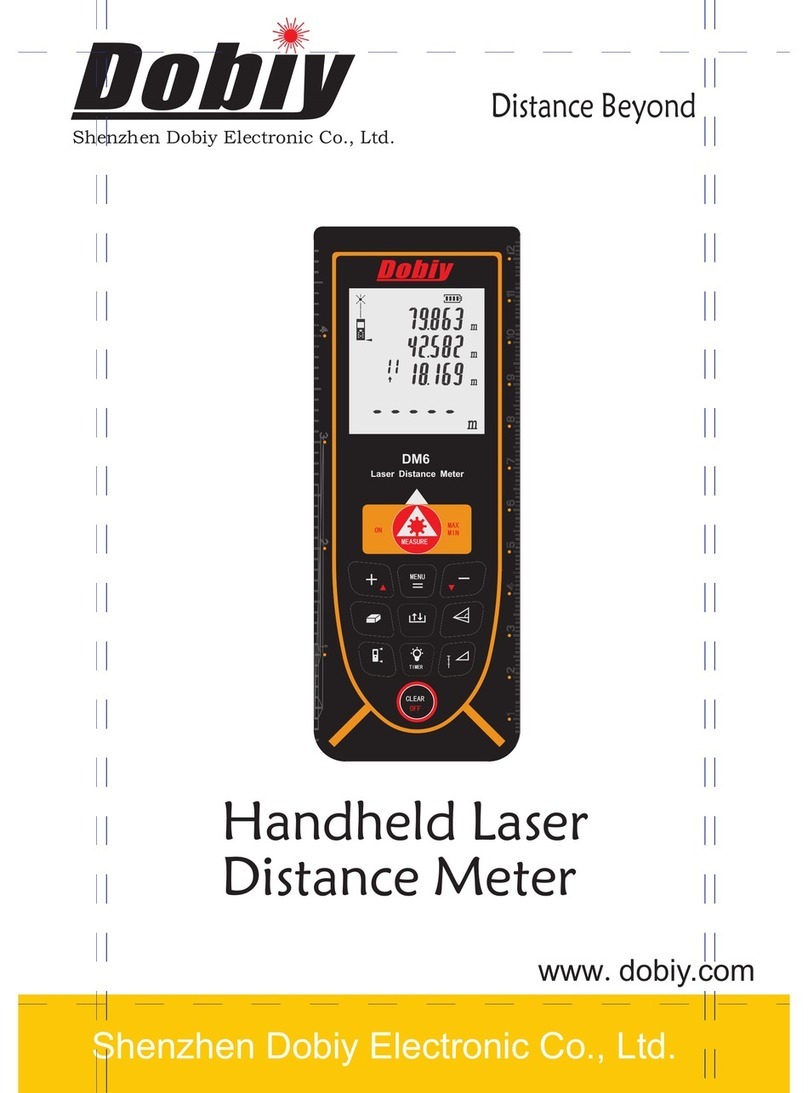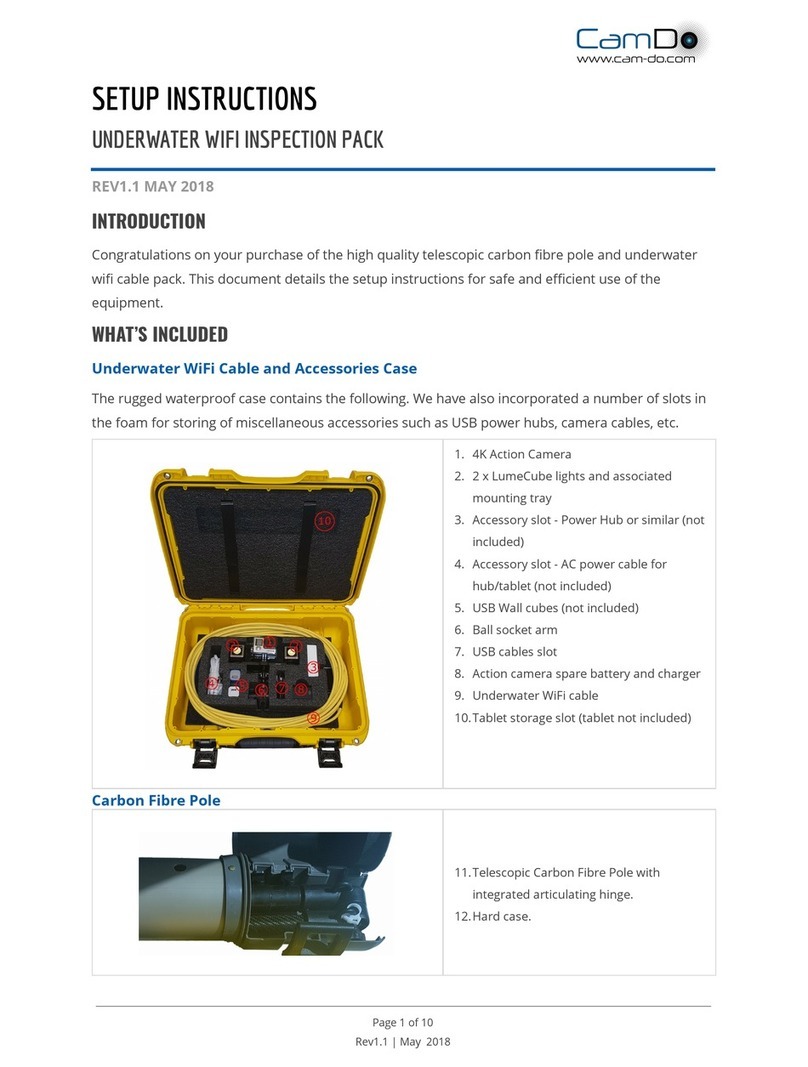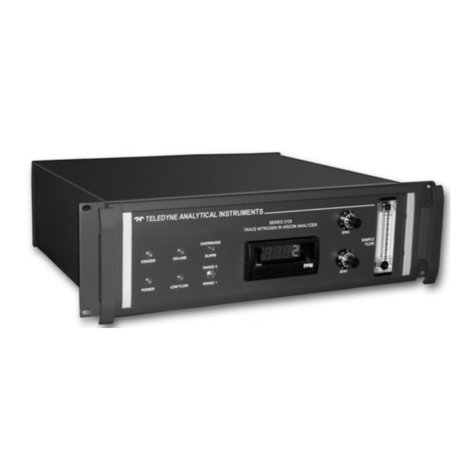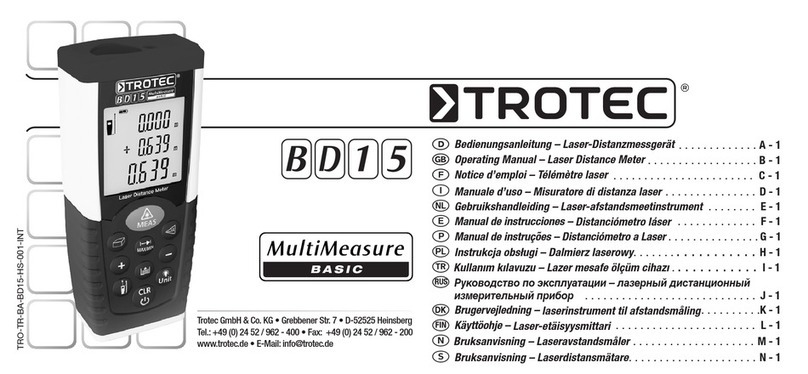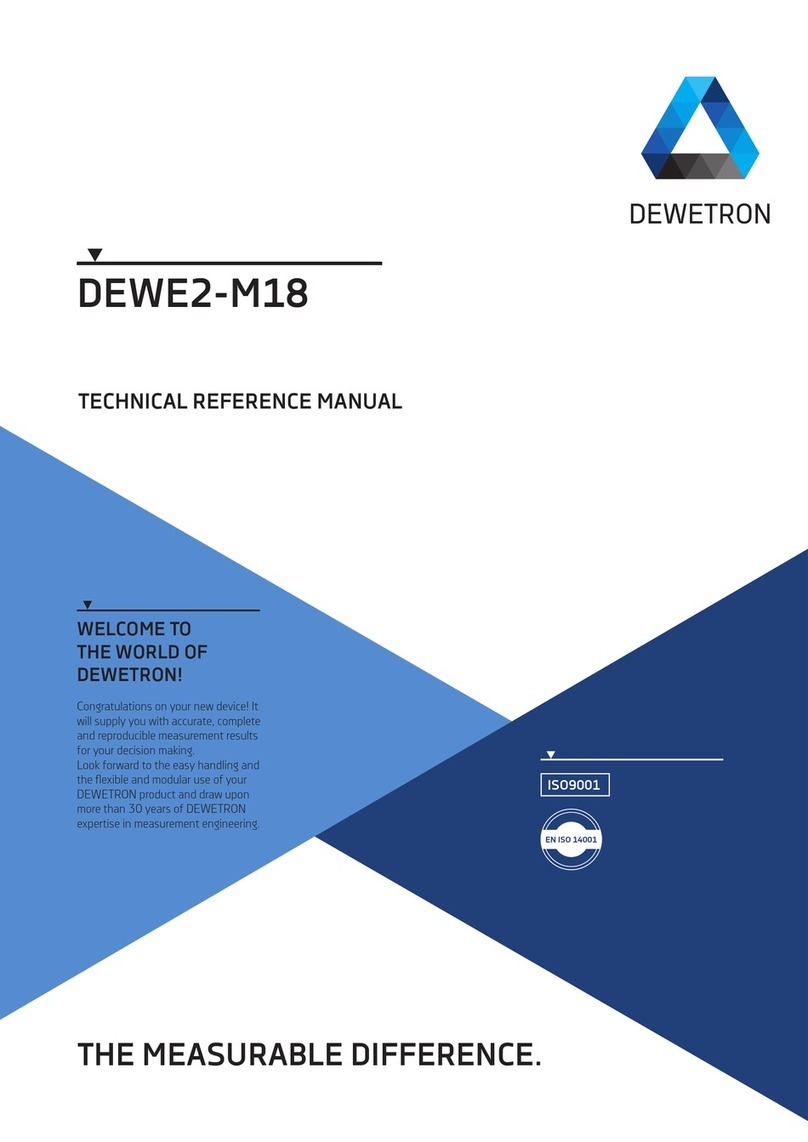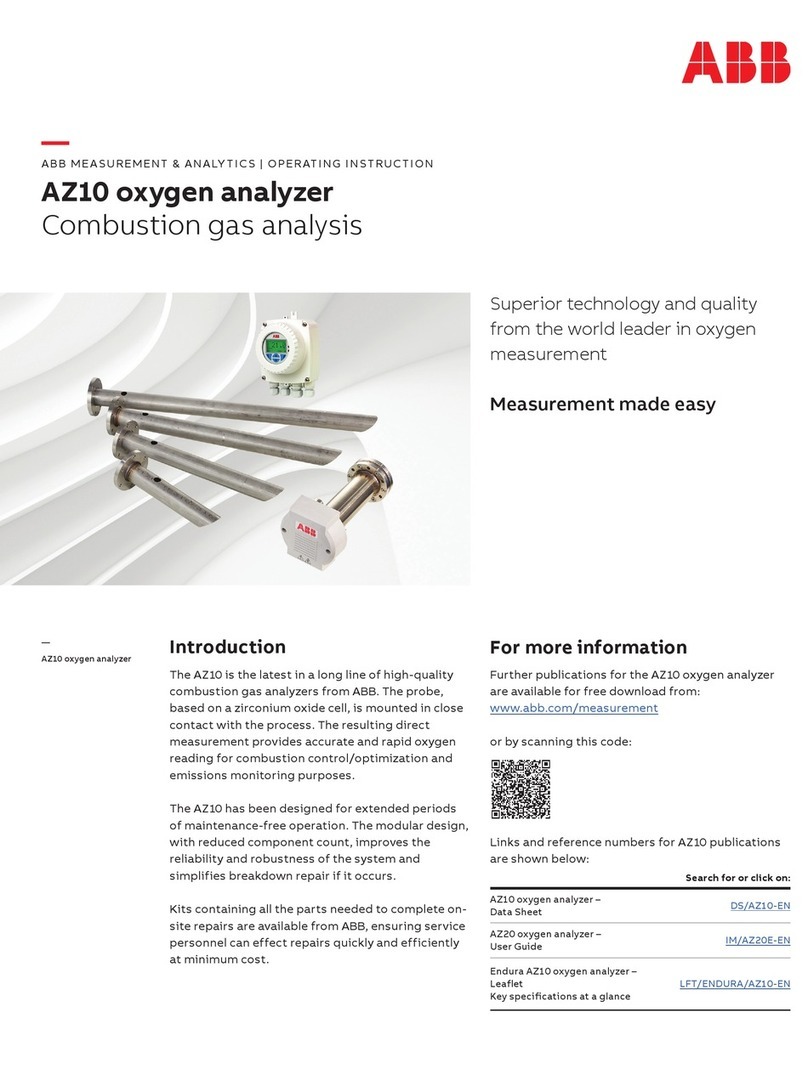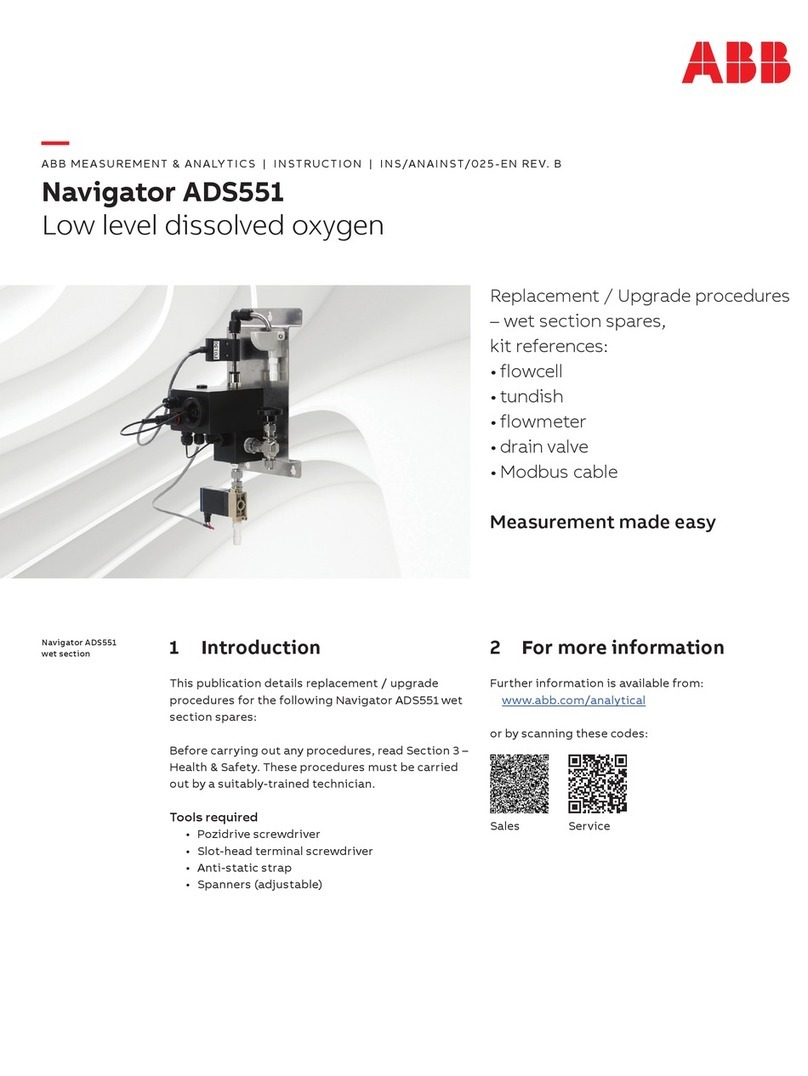Precision Medical Accu O2 PM5950 User manual

USER MANUAL
Federal (USA) law restricts this device to sale
by or on the order of a physician.
SAVE THESE INSTRUCTIONS
(For latest revision, go to www.precisionmedical.com)
Tel: (+001) 610-262-6090
Fax: (+001) 610-262-6080
300 Held Drive Toll Free Tel: 800-272-7285
Northampton Pa 18067 (USA) Toll Free Fax: 800-353-1240
ISO 13485 Certied www.precisionmedical.com
Oxygen Analyzer
Model: PM5950

CONTENTS
RECEIVING/INSPECTION..................................................................1
INTENDED USE..................................................................................1
CONTRAINDICATION.........................................................................1
OPERATOR PROFILE ........................................................................1
READ ALL INSTRUCTIONS BEFORE USING ...................................1
SAFETY SIGNS AND WARNING\CAUTION STATEMENTS..............2
SPECIFICATIONS...............................................................................5
COMPONENT DESCRIPTION............................................................7
OXYGEN SENSOR COMPONENT IDENTIFICATION ..................9
OPERATING INSTRUCTIONS..........................................................10
SENSOR INSTALLATION ............................................................10
CALIBRATION.............................................................................. 11
EFFECTS OF ELEVATION/BAROMETRIC PRESSURE CHANGES
....12
EFFECTS OF TEMPERATURE: .......................................................12
EFFECTS OF HUMIDITY:.................................................................12
EFFECTS OF PRESSURE: ..............................................................13
EFFECTS OF ANESTHETIC GASES: ..............................................13
CLEANING ........................................................................................14
MAINTENANCE ................................................................................14
SENSOR REPLACEMENT ..........................................................14
BATTERY REPLACEMENT .........................................................14
RETURNS .........................................................................................15
DISPOSAL INSTRUCTIONS.............................................................15
TROUBLESHOOTING ......................................................................16
REPLACEMENT PARTS ...................................................................17
Oxygen
Analyzer

1
Oxygen
Analyzer
RECEIVING/INSPECTION
Remove the Precision Medical Oxygen Analyzer from the packaging
and inspect for damage. If there is any damage, DO NOT USE and
contact your Provider.
INTENDED USE / INDICATIONS FOR USE
Precision Medical, Inc. Oxygen Analyzer is intended as a tool for use
by qualied personnel to spot-check or measure oxygen concentration
of a delivered air/oxygen mixture.
CONTRAINDICATION
The Precision Medical, Inc. Oxygen Analyzer is not intended to actively
monitor oxygen concentration or oxygen gas mixtures while being
delivered to a patient. The Precision Medical, Inc. Oxygen Analyzer is
not intended for use in a MRI environment.
OPERATOR PROFILE
The Oxygen Analyzer is to be used by trained healthcare
professionals.
READ ALL INSTRUCTIONS BEFORE USING
This manual instructs a Professional how to operate the Oxygen
Analyzer. This is provided for your safety and to prevent damage to
the Oxygen Analyzer. If you do not understand this manual, DO NOT
USE the Oxygen Analyzer and contact your Provider.

2
Oxygen
Analyzer
SAFETY SIGNS AND WARNING\CAUTION STATEMENTS
DANGER
Indicates an imminently hazardous situation which,
if not avoided, will result in death or serious injury.
WARNING
Indicates a potentially hazardous situation which, if
not avoided, could result in death or serious injury.
CAUTION
Indicates a potentially hazardous situation which, if
not avoided, may result in minor or moderate injury.
CAUTION Used without the safety alert symbol indicates
a potentially hazardous situation which, if not
avoided, may result in property damage.
Follow instructions for use
General Mandatory Action Sign
This device may contain electrical components
that are hazardous to the environment. DO NOT
dispose device into standard trash. Contact your
local waste management for disposal of
Electronic Equipment.
Caution! U.S. Federal Law restricts this device to
sale by or on the order of a physician.
Liquid ingress protection - Dripping water
(vertically falling drops) shall have no harmful
effect on the device when mounted in an
upright position.
MR Unsafe
An item marked MR unsafe is known to posed
hazards in all MR enviroments.

3
Oxygen
Analyzer
WARNING
• Read this User Manual before installing or operating the
Oxygen Analyzer.
• Only trained, qualied personnel should operate the Oxygen
Analyzer.
• Use this Oxygen Analyzer only for its intended use as described
in this manual.
• DO NOT use near any type of ame or ammable/ explosive
substances, vapors or atmosphere.
• DO NOT allow an excessive length of cable near anyone’s head
or neck that could result in strangulation. Secure excess cable
to bed rail or suitable object.
• Medical Oxygen should meet the requirements of USP.
• Always follow ANSI and CGA standards for Medical Gas
Products, and Oxygen Handling.
• The Oxygen Analyzer should only be serviced by a qualied
service technician, or by Precision Medical, Inc.
• DO NOT use Oxygen Analyzer with a cable that appears worn,
cracked or has damaged insulation.
• Never install the sensor in a location that will expose the sensor
to exhaled breath or secretions, unless you intend to dispose of
the sensor, ow diverter and tee adapter.
• Improper use of this device can cause inaccurate oxygen
readings which can lead to improper treatment, hypoxia or
hyperoxia. Follow the procedures outlined in this user manual.
• Not for use in an MRI environment. The Oxygen Analyzer
contains magnetic, ferrous material that may affect the results of
an MRI.
• Device intended for use with dry gas only.
• Before use, all individuals who will be using the Oxygen
Analyzer must become thoroughly familiar with the
information contained in this User Manual. Strict adherence
to the operating instructions is necessary for safe, effective
product performance. This product will perform only as
designed if installed and operated in accordance with these
operating instructions.

4
Oxygen
Analyzer
WARNING
• Use only genuine Precision Medical Inc. accessories and
replacement parts. Failure to do so may seriously impair
the analyzer’s performance. Repair of this device must be
performed by a qualied service technician.
• Calibrate the Oxygen Analyzer before use, or weekly when in
operation, or if environmental conditions change signicantly.
(i.e., Elevation, Temperature, Pressure, Humidity.
• Use of the Oxygen Analyzer near devices that generate
electrical elds may cause erratic readings.
• Never autoclave, immerse or expose the Oxygen Analyzer
(including sensor) to high temperatures (>70°C). Never expose
the device to pressure, irradiation vacuum, steam, or chemicals.
• This device does not contain automatic barometric pressure
compensation.
• Although the Sensor of this device has been tested with various
anesthesia gases including nitrous oxide, Halothane, Isourane,
Enurane, Sevourane and Desurane and found to have
acceptably low interference, the device in entirety (including
electronics) is not suitable for use in the presence of a
ammable anesthetic mixture with air or with oxygen or nitrous
oxide. Only the threaded Sensor face, Flow Diverter, and
Tee Adapter may be allowed to contact such a gas mixture.
• NOT for use with inhalation agents. Operating the device
in ammable or explosive atmospheres may result in re or
explosion.
• No modication of this device is allowed.

5
Oxygen
Analyzer
SPECIFICATIONS
Base Device Specications
Dimensions (Analyzer without Cable and Sensor attached):
Depth: 1.30” (3.32 cm)
Width: 2.90” (7.30 cm)
Height: 4.00” (10.23 cm)
Cable Length: 10 ft. (3.05m) (fully extended)
Weight:
Device Weight: 0.35 lbs (5.60 oz / 0.15 kg)
(includes: Analyzer, Sensor, Cable and
batteries)
CAUTION
• DO NOT:
○ use if dirt or contaminants are present on or around this
Oxygen Analyzer or connecting devices.
○ smoke in an area where oxygen is being administered.
○ clean with aromatic hydrocarbons.
○ steam autoclave.
○ gas sterilize.
○ immerse Oxygen Analyzer or Sensor in liquid.
○ immerse the sensor in any cleaning solution, autoclave
or expose the sensor to high temperatures.
• Store the Oxygen Analyzer in a clean, dry area when not in use.
• The Oxygen Sensor is a sealed device containing a mild acid
electrolyte, lead (Pb), and lead acetate. Lead and lead acetate
are hazardous waste and should be disposed of properly.
• Dropping Sensor can adversely affect its performance.
• Be sure to apply 100% oxygen, or ambient air concentration
to the device during calibration or the device will not calibrate
correctly.

6
Oxygen
Analyzer
Operating Conditions:
Temperature: 50ºF - 113ºF (10ºC - 45ºC)
Altitude: Sea Level to 8000 feet
Humidity: 0 - 95% non-condensing
Storage Conditions:
Temperature: 5°F - 122°F (-15°C - 50°C)
Humidity: 0 - 95% non-condensing
Mode of Operation: Continuous
Electrical
Classication:
Internally powered Medical Electrical
equipment
Diverter Fitting: ts industry standard, 15 mm Tee Adapter
Measurement
Range:
0.0 - 100% Oxygen
Resolution: 0.1 %
Total Accuracy: ± 3.0% Actual Oxygen Level over full
operating temperature range
Drift of
Measurement:
< +/-1% of full scale at constant
temperature, pressure and humidity
Response Time: 90% of nal value in less than 12 seconds
at 77°F (25ºC)
Warm-up Time: Not required
Low Battery
Indication:
Low battery icon displayed
Patient Contact: Indirect contact via gas passing through
sensor sampling site.
Sensor Specications
Sensor Type Galvanic Oxygen Sensor; Precision Medical
PN 504877
Expected Sensor Life > 1,000,000 O
2
% Hours
Specications are subject to change without notice.

7
Oxygen
Analyzer
COMPONENT DESCRIPTION
Classications
Protection against
electric shock:
Internally powered equipment
Protection against water: IPX1 (Drip Proof)
Mode of Operation: Continuous
Sterilization: Non-Sterile Device
Flammable anesthetic mixture: Not suitable for use in presence
of a ammable anesthetic mixture
Sensor Cable
Connection
Calibration
Indicator
Calibrate
Low Battery
Indicator
Oxygen %
Concentration
Power ON/OFF

8
Oxygen
Analyzer
ITEM NAME DESCRIPTION
Power Key The Power Key turns the Oxygen Analyzer
ON and OFF. The Lock/Unlock Key must be
pressed to unlock the Oxygen Analyzer, before
being powered OFF.
Calibration Key
Pressing the Calibration Key calibrates the
Oxygen Analyzer with air or oxygen.
Calibration Symbol - The Calibration Symbol is
located on the display and is timed to activate
when a calibration is necessary, or when a
calibration is being conducted.
Low Battery Symbol - The Low Battery Indicator
is located on the top of the display and is only
activated when the voltage on the batteries is
below a normal operating level.
– – – Invalid Reading Symbol – Bad Sensor, Bad Cable
connection, Invalid Calibration
100.0 % Oxygen Concentration Reading. (0.0 to 100.0 %)
Sensor Cable
Connector
Cable Interface connection between Oxygen
Analyzer and Oxygen Sensor Cable.

9
Oxygen
Analyzer
OXYGEN SENSOR COMPONENT IDENTIFICATION
Coiled Cable
Locking Ring
Oxygen Sensor
Diverter Fitting
Tee Adapter
ITEM NAME DESCRIPTION
Coiled Cable
The Coiled Cable allows the Sensor to be positioned
up to 10 ft from the side of the Oxygen Analyzer. There
are Male Plugs at each end of the Coiled Cable.
Locking Ring Male Plugs have Locking Rings and must be
engaged when in use.
Oxygen Sensor Galvanic Oxygen Sensor
Diverter Fitting Fitting used to connect to the Oxygen Source.
Tee Adapter
The Tee Adapter is used to connect the Oxygen
Sensor and Diverter Fitting to an oxygen pathway
circuit.

10
Oxygen
Analyzer
OPERATING INSTRUCTIONS
SENSOR INSTALLATION
CAUTION
• Inspect the Oxygen Analyzer, Sensor and Cable for visual
damage before use, DO NOT USE if damaged.
• Inspect the Oxygen Sensor and Diverter Fitting for visual
damage or electrolyte leakage before use. DO NOT USE if
damaged.
• Use ONLY an Oxygen Sensor specied by Precision Medical,
Inc.
• The Oxygen Sensor should not be used in the presence of
ammable anesthetics such as Diethyl Ether or Cyclopropane.
• DO NOT attempt to open or repair the Oxygen Sensor.
• The Sensor electrolyte is corrosive, and contains lead.
• DO NOT let Sensor electrolyte come in contact with the skin. If
it does, ush affected area with water.
• Check the Sensor regularly for leaks. If the Sensor is leaking,
replace with NEW Sensor. Leaking or used Sensors should be
handled and disposed of in accordance with local regulations.
• An SDS is available from Precision Medical, Inc.
• If the Oxygen Sensor is used in breathing circuits, the Diverter
must be attached to the Sensor and must be used with the Tee
Adapter.
• The Oxygen Sensor must be installed before the Oxygen
Analyzer can be operated.
1. Screw the Diverter to the bottom of the Oxygen Sensor, tighten
until snug.
2. If using the Tee Adapter, attach to the Diverter.
3. Insert the one end of the Coiled Cable into the top of the Sensor,
and secure by tightening the Locking Ring.
4. Insert the other end of the Coiled Cable into the Sensor Cable
Connection located on the top of the Oxygen Analyzer. Secure it in
place by tightening the Locking Ring.
5. Wait approximately 20 minutes for the NEW Sensor to stabilize to
the environment.
6. Calibrate the Oxygen Analyzer with the NEW Sensor.

11
Oxygen
Analyzer
CAUTION
• Calibrate the Oxygen Analyzer before each use, and when
replacing the Oxygen Sensor or the batteries.
• To ensure accuracy, the Precision Medical Oxygen Analyzer
should only be calibrated using 100% Oxygen. Using any other
concentration will result in possible inaccurate readings.
• Air calibration is not recommended unless the Sensor can be
exposed to a known source of clean air. Hospital room air is
often enriched with excess oxygen.
• Calibrate the Oxygen Analyzer at a pressure and ow similar to
your application.
• Before calibrating the Oxygen Analyzer, the oxygen
concentration readout should be stable and not drifting more
than 0.2%.
• DO NOT calibrate the Oxygen Analyzer in humidied gas.
CALIBRATION
New calibration is required when;
ØThe measured O2percentage in 100% O2is below
97.0% O2.
ØThe measured O2percentage in 100% O2is above
100.0% O2.
ØThe CAL reminder Icon is activated on the LCD.
ØIf you are unsure about the displayed O2percentage.
A simple calibration may be made with the Sensor open to
static ambient air. For optimum accuracy Precision Medical Inc.
recommends that the Sensor be placed in a closed loop oxygen circuit
where gas ow is moving across the sensor in a controlled manner.
Calibrate with the same type of circuit and ow that you will use in
taking your readings.
1. Follow Sensor Installation instructions above.
2. Attach an open-ended reservoir to the end of the Tee Adapter.
Start ow of 100% oxygen at a pressure and ow similar to your
application.
ØSix to 10 inches of corrugated tubing works well as a
reservoir.

12
Oxygen
Analyzer
EFFECTS OF ELEVATION/BAROMETRIC
PRESSURE CHANGES
This device does not automatically compensate for changes in
barometric pressure. Calibration of the Analyzer shall be performed
when elevation at which the device is being used changes more than
500 feet.
EFFECTS OF TEMPERATURE
To minimize temperature effects:
1. In a breathing circuit, place the Oxygen Sensor upstream of
the heater.
2. Allow time for the Oxygen Sensor to stabilize to its new
room temperature.
3. Perform the calibration procedure at a temperature close to or
similar to your clinical application
EFFECTS OF HUMIDITY:
High Moisture levels will dilute the oxygen concentration, decreasing
the concentration of oxygen being monitored by the Oxygen Sensor.
High humidity can cause condensation to collect on the Oxygen
Sensor, obstructing the passages and reducing the effectiveness of
the Oxygen Sensor.
Ø A calibration gas ow to the Oxygen Analyzer of two liters
per minute or more is recommended to minimize the
possibility of obtaining a “false” calibration value.
3. Allow the oxygen to saturate the Sensor. Although a stable value
is usually observed within 30 seconds, allow at least two minutes
to ensure that the sensor is completely saturated with the
calibration gas.
4. If the Oxygen Analyzer is not already turned on, do so now by
pressing the Analyzer “ON” button.
5. Press and hold the Cal button on the Oxygen Analyzer for at
least 3 seconds to activate calibration. The Analyzer will detect a
stable Sensor signal. When obtained, the Analyzer will display the
assumed calibration gas on the LCD.

13
Oxygen
Analyzer
CAUTION
To reduce the effects of humidity on the Sensor:
• DO NOT USE the Oxygen Sensor in environments with greater
than 95% humidity.
• Place the Oxygen Sensor upstream from the Humidier in a
breathing circuit.
EFFECTS OF PRESSURE:
CAUTION
The Oxygen Analyzer is not equipped with automatic barometric
pressure compensation.
The following recommendation is provided to reduce the chances of
pressure causing false readings.
Calibrate the Precision Medical Oxygen Analyzer using 100% oxygen
or room air at the same pressure and ow as the gas to be analyzed.
EFFECTS OF ANESTHETIC GASES:
ANESTHETIC
AGENT
TEST
CONCENTRATION
Oxygen
CONCENTRATION
ERROR
Helium 50%, Balance Oxygen 0%
Nitrous Oxide 80%, Balance Oxygen 0%
Carbon Dioxide 10%, Balance Oxygen 0%
Halothane 4% <1.5% Oxygen*
Enurane 5% <1.5% Oxygen*
Isourane 5% <1.5% Oxygen*
Sevourane 5% <1.5% Oxygen*
Desurane 15% <1.5% Oxygen*
Test mixture = 30% O2, balance 70% N2O except where noted.
* Errors may vary based on concentrations and exposure times.

14
Oxygen
Analyzer
CAUTION
The Oxygen Sensor should not be used in the presence of
ammable anesthetics such as Diethyl Ether or Cyclopropane.
CLEANING
CAUTION
• DO NOT steam autoclave.
• DO NOT immerse the Oxygen Analyzer into any liquid.
• DO NOT use any strong solvent or abrasive cleaners.
• DO NOT allow any liquid to enter the Oxygen Analyzer or
the Oxygen Sensor; this will damage the Oxygen Analyzer or
Oxygen Sensor and will void the Warranty.
1. Disconnect all connections before cleaning.
2. Clean exterior surfaces of the Oxygen Analyzer, Tee Adapter
and Coiled Cable with a cloth dampened with mild detergent and
water.
3. Wipe dry with a clean cloth.
4. Wipe Oxygen Sensor and Diverter using a lint free dry clean cloth.
MAINTENANCE
Sensor Replacement
Reference “SENSOR INSTALLATION”
CAUTION
Sensor Replacement must be performed by Qualied Personnel.
Battery Replacement
Replace batteries when “Low Battery” icon is displayed.
1. Remove 4 screws located on the back and remove cover.
2. Remove and replaced batteries with 2 new AA Alkaline batteries.
Verify correct polarity.
3. Secure back cover onto the Oxygen Analyzer with the 4 screws.

15
Oxygen
Analyzer
RETURNS
Returned products require a Returned Goods Authorization (RGA)
number, contact Precision Medical, Inc. All returns must be packaged
in sealed containers to prevent damage. Precision Medical, Inc. will
not be responsible for goods damaged in transit. Refer to Precision
Medical, Inc. Return Policy available on the Internet,
www.precisionmedical.com.
DISPOSAL INSTRUCTIONS
The Oxygen Analyzer may contain electrical components that are
hazardous to the environment. DO NOT dispose device into standard
waste stream.
The Oxygen Analyzer contains internal batteries. Batteries contain
materials which can contaminate the environment when improperly
disposed of.
The Oxygen Sensor contains lead. DO NOT dispose sensor into
standard trash. Dispose in accordance with the local regulations.
Contact your local waste management for disposal of
Electronic Equipment.

16
Oxygen
Analyzer
TROUBLESHOOTING
If the Oxygen Analyzer fails to function, consult the Troubleshooting
Guide. If the problem cannot be solved by using Troubleshooting
Guide, consult your Provider.
CAUTION DO NOT attempt to service the device while in use.
Problem Probable Cause Remedy
Low Battery Indicator
is displayed
1. Battery voltage
too low
1. Replace batteries
New Oxygen Sensor
responds slowly or
seems to drift
1. Oxygen Sensor
has NOT
temperature
stabilized
1. Wait approximately
20 minutes for
Oxygen Sensor to
stabilize with the
environment, and
then recalibrate the
Oxygen Analyzer
Oxygen Sensor
does not react to
changes in oxygen
concentration
1. Condensation
on the Oxygen
Sensor
2. Non functioning
Oxygen Sensor
1. Remove
Condensation
2. Replace with New
Precision Medical
Oxygen Sensor
No Display/ LCD
screen will not
power ON
1. Dead batteries 1. Replace batteries
Displays “ - - - ”1. Defective Sensor
2. Bad Cable
Connection
3. Invalid
Calibration
1. Replace with New
Precision Medical
Oxygen Sensor
2. Ensure Cable is
secured to the
Device and the
Sensor. Replace
Cable.
3. Recalibrate device.
Repair of this device must be performed by a qualied
service technician.

17
Oxygen
Analyzer
REPLACEMENT PARTS
Description Part #
User Manual 508459
Precision Medical Oxygen Sensor with
Diverter 504877
Tee Adapter 505126
Extendible Cable 504937
Diverter 505344
Batteries (2 required) 505124
Orders for replacement parts should include the part number, if
available and the model and serial number of the instrument for which
the parts are intended.
Precision Medical Inc.
300 Held Drive
Northampton Pa 18067 (USA)
Tel: (+001) 610-262-6090
Fax: (+001) 610-262-6080
Toll Free Tel: 800-272-7285
Toll Free Fax: 800-353-1240
Authorized Representative:
Emergo Europe (European Ofce)
Prinsessegracht 20
2514 AP, The Hague
The Netherlands
Phone: +31 (0)70.345.8570
Fax: +31 (0) 70.346.7299

18
Oxygen
Analyzer
GUIDANCE AND MANUFACTURER’S
DECLARATION – Electromagnetic Immunity
The PM5950 Acc O2 Analyzer is intended for use in the electromagnetic environment specied
below. The user of the PM5950 Acc O2 Analyzer should make sure it is used in such an
environment.
Immunity Test IEC 60601 Test Level Compliance Level Electromagnetic Environment - Guidance
Conducted RF
IEC 61000-4-6
3 Vrms
150 kHz
to 80 MHz
3 Vrms
3 V/m
Portable and mobile RF communications
equipment should be used no closer to any
part of the PM5950 Acc O2 Analyzer, including
cables, than the recommended separation
distance calculated from the equation
applicable to the frequency of the transmitter.
Radiated RF
IEC 61000-4-3
3 Vrms
80 MHz
to 2.7GHz
Recommended separation distance:
d=1.2 √P 150 kHz to 80 MHz
d=1.2 √P 80 MHz to 800 MHz
d=2.3 √P 800 MHz to 2.5 GHz
Where P is the maximum output power rating
of the transmitter in watts (W) according to
the transmitter manufacturer and d is the
recommended separation distance in
meters (m).
Field strengths from xed RF transmitters, as
determined by an electromagnetic site survey
a, should be less than the compliance level
in each frequency range b. Interference may
occur in the vicinity of equipment marked with
the following symbol:
Electrostatic Discharge
(ESD)
IEC 61000-4-2
±8kV contact
±15kV air
±8kV contact
±15kV air
Floors should be wood, concrete or ceramic
tile. If oors are covered with synthetic material,
the relative humidity should be greater
than 5%.
Electrical Fast Transient/
burst
IEC 61000-4-4
± 2 kV for power
supply lines
± 1 kV for input/
output lines
± 2 kV for power
supply lines
± 1 kV for input/
output lines
Mains power quality should be that of a typical
commercial or hospital environment.
Surge
IEC 61000-4-5
± 1 kV line(s) to
line(s)
± 2 kV line(s) to
earth
± 1 kV line(s) to
line(s)
± 2 kV line(s) to
earth
Mains power quality should be that of a typical
commercial or hospital environment.
Voltage dips, short
interruptions and voltage
variations on power supply
input lines
IEC 61000-4-11
<5% UT(>95% dip in
UT) for 0.5 cycle
40% UT(60% dip in
UT) for 5 cycles
70% UT(30% dip in
UT) for 25 cycles
<5% UT(>95% dip
in UT) for 0.5 cycle
40% UT(60% dip in
UT) for 5 cycles
70% UT(30% dip in
UT) for 25 cycles
Mains power quality should be that of a typical
commercial or hospital environment. If the
user of the [ME EQUIPMENT or ME SYSTEM]
requires continued operation during power
mains interruptions, it is recommended that
the [ME EQUIPMENT or ME SYSTEM] be
powered from an uninterrupted power supply
or a battery.
Power frequency
(50/60 Hz) magnetic eld
IEC 61000-4-8
30A/m 30A/m Power frequency magnetic elds should be at
levels characteristic of a typical location in a
typical hospital or home environment.
Table of contents
Popular Analytical Instrument manuals by other brands
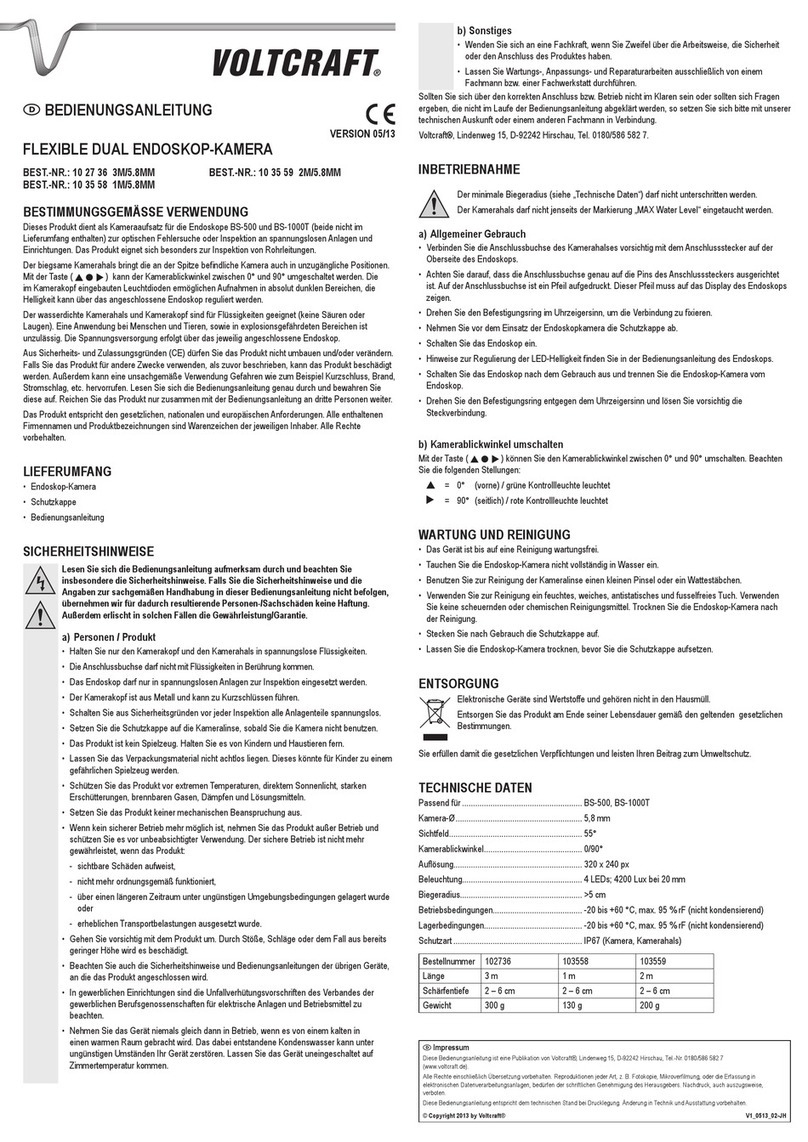
VOLTCRAFT
VOLTCRAFT 10 27 36 operating instructions
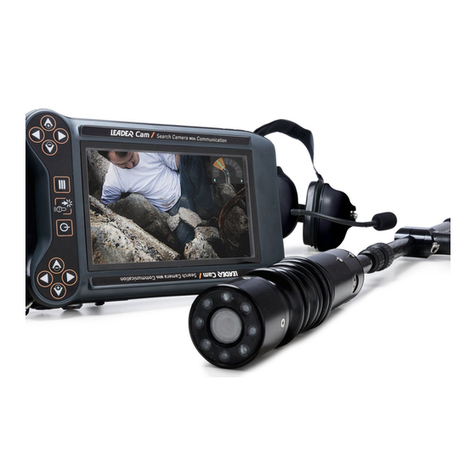
Leader
Leader Cam R90 user manual
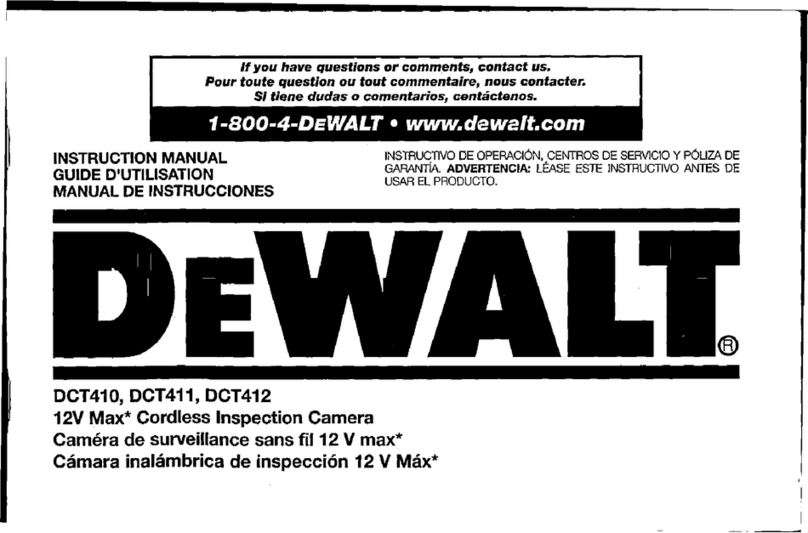
DeWalt
DeWalt DCT410 instruction manual

Research Electronics International
Research Electronics International MESA user manual

Bühler technologies
Bühler technologies GAS 222.35 Ex2 Installation and operation instruction
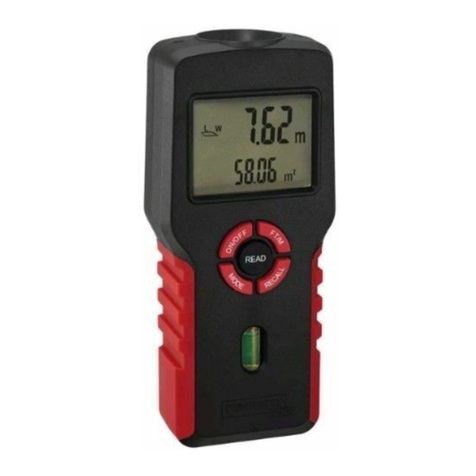
Powerfix Profi
Powerfix Profi 288019 Operation and safety notes
